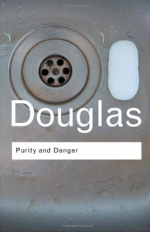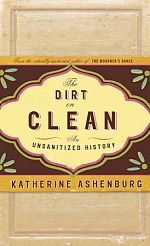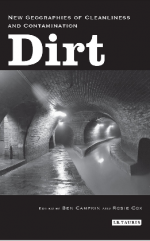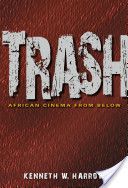The contributors to this work expose the interests which underlie everyday conceptions of dirt and reveal how our ideas about it are intimately bound up with issues of race, ethnicity, class, gender, sexuality and the body. Exploring a wide variety of settings--domestic, urban and rural--this original work reveals how attitudes to dirt and cleanliness become manifest in surprisingly diverse ways, including the rituals associated with death and burial; interior and architectural design aesthetics; urban infrastructure, regeneration and renewal; film symbolism; and consumer attitudes to food.
A rich and challenging work that extends our understanding of the cultural manifestations of dirt and cleanliness."

"Purity and Danger is acknowledged as a modern masterpiece of anthropology. It is widely cited in non-anthropological works and gave rise to a body of application, rebuttal and development within anthropology. In 1995 the book was included among the Times Literary Supplement's hundred most influential non-fiction works since WWII. Incorporating the philosophy of religion and science and a generally holistic approach to classification, Douglas demonstrates the relevance of anthropological enquiries to an audience outside her immediate academic circle. She offers an approach to understanding rules of purity by examining what is considered unclean in various cultures. She sheds light on the symbolism of what is considered clean and dirty in relation to order in secular and religious, modern and primitive life."

"For the first-century Roman, being clean meant a public two-hour soak in baths of various temperatures, a scraping of the body with a miniature rake, and a final application of oil. For the seventeenth-century aristocratic Frenchman, it meant changing his shirt once a day, using perfume to obliterate both his own aroma and everyone else’s, but never immersing himself in – horrors! – water. By the early 1900s, an extraordinary idea took hold in North America – that frequent bathing, perhaps even a daily bath, was advisable. Not since the Roman Empire had people been so clean, and standards became even more extreme as the millennium approached. Now we live in a deodorized world where germophobes shake hands with their elbows and where sales of hand sanitizers, wipes and sprays are skyrocketing.
The apparently routine task of taking up soap and water (or not) is Katherine Ashenburg’s starting point for a unique exploration of Western culture, which yields surprising insights into our notions of privacy, health, individuality, religion and sexuality.
Ashenburg searches for clean and dirty in plague-ridden streets, medieval steam baths, castles and tenements, and in bathrooms of every description. She reveals the bizarre rescriptions of history’s doctors as well as the hygienic peccadilloes of kings, mistresses, monks and ordinary citizens, and guides us through the twists and turns to our own understanding of clean, which is no more rational than the rest. Filled with amusing anecdotes and quotations from the great bathers of history, The Dirt on Clean takes us on a journey that is by turns intriguing, humorous, startling and not always for the squeamish. Ashenburg’s tour of history’s baths and bathrooms reveals much about our changing and most intimate selves – what we desire, what we ignore, what we fear, and a significant part of who we are."
"Highlighting what is melodramatic, flashy, low, and gritty in the characters, images, and plots of African cinema, Kenneth W. Harrow uses trash as the unlikely metaphor to show how these films have depicted the globalized world. Rather than focusing on topics such as national liberation and postcolonialism, he employs the disruptive notion of trash to propose a destabilizing aesthetics of African cinema. Harrow argues that the spread of commodity capitalism has bred a culture of materiality and waste that now pervades African film. He posits that a view from below permits a way to understand the tropes of trash present in African cinematic imagery."
All blurbs from books.google.com.




